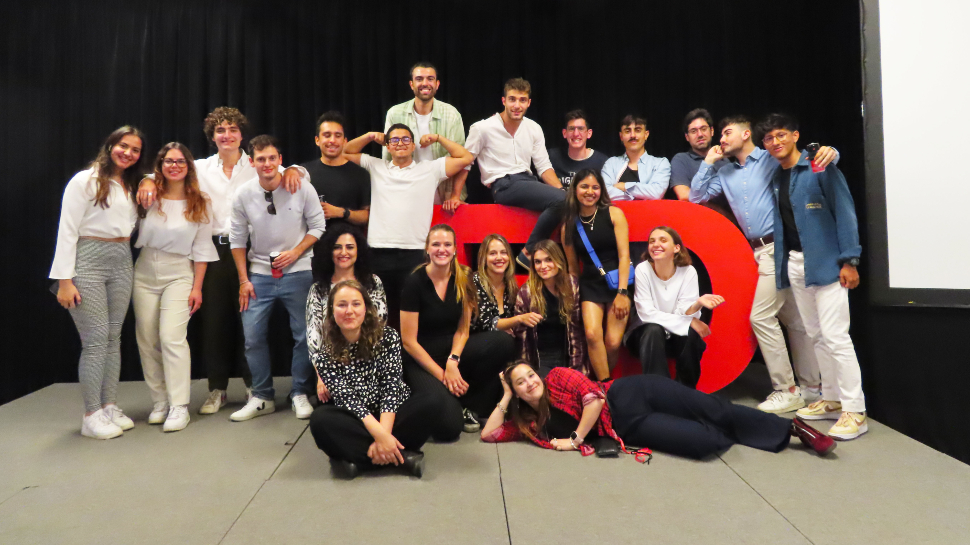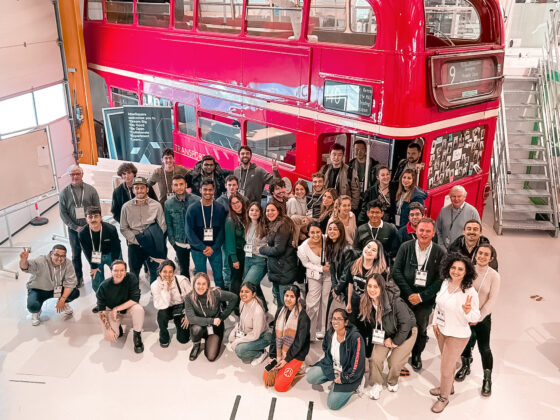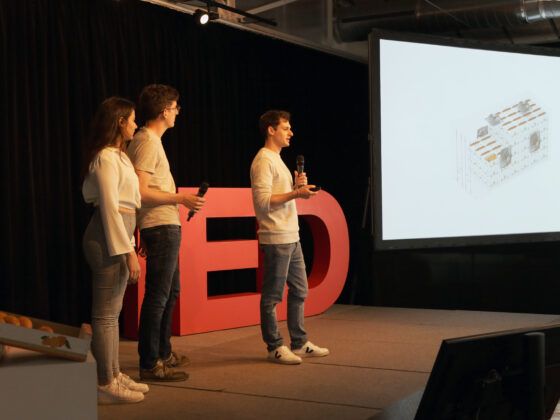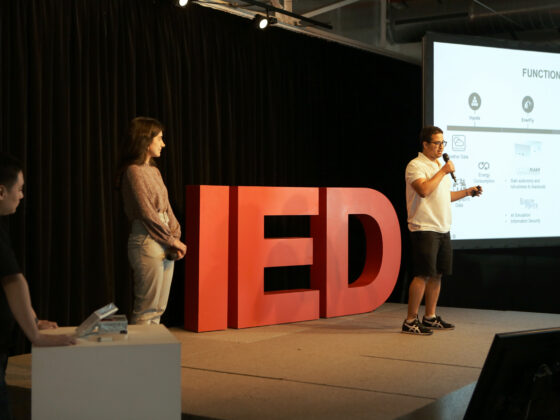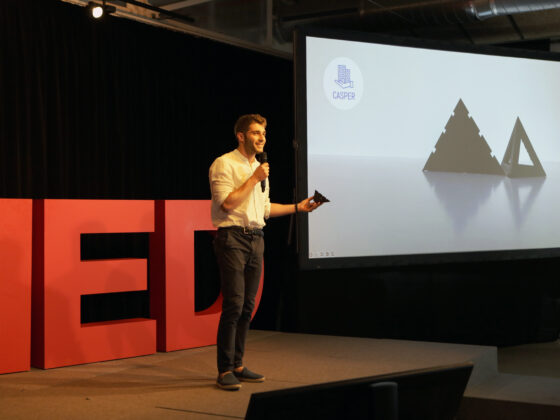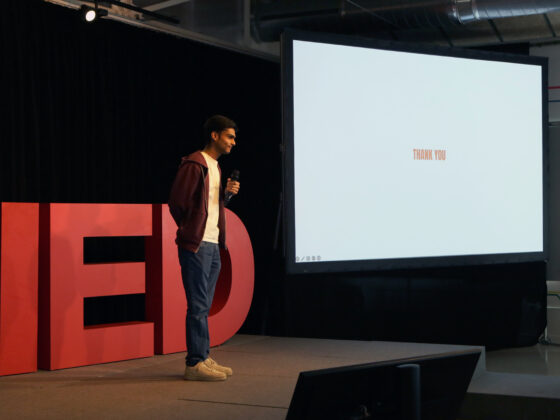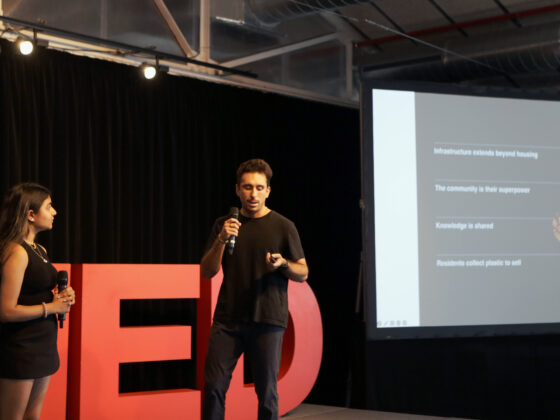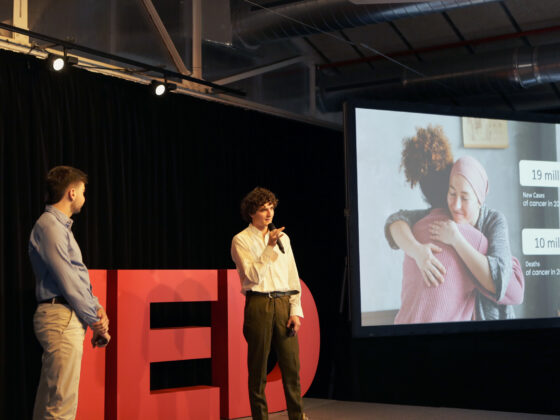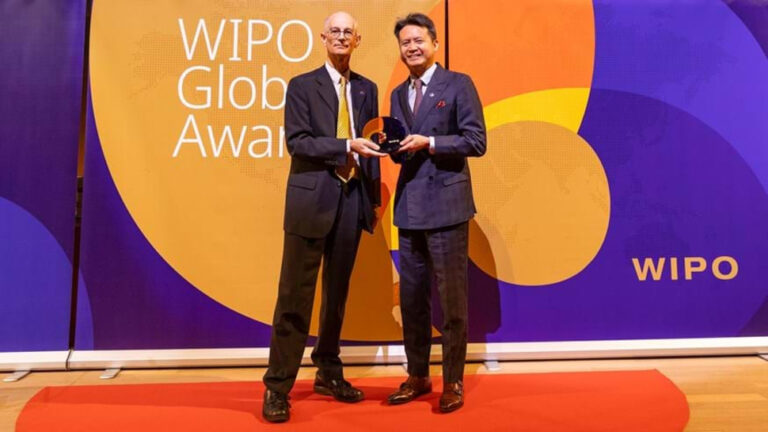The 34 students from the current edition of the Challenge Based Innovation for Artificial Intelligence (CBI4AI) program presented their prototypes and business models during the Final Presentations Day on May 17th at IED Barcelona. These prototypes were focused on a specific challenge to address the ninth UN Sustainable Development Goal (SDG9): build resilient infrastructure, promote inclusive and sustainable industrialization and foster innovation.
This was the second round of the CBI4AI program, and students from Esade, IED Barcelona and UPC collaborated with researchers from some of the R&D&I projects from ATTRACT phase 2: POSICS-2, Random Power and ULTRARAM™, to come up with a solution to the challenge.
These are the six interdisciplinary teams that participated in the current edition of the CBI4AI:
- Team Fruit Ninjas: the “Frutect” project aims to minimize food waste caused by fruit overheating in storage facilities by implementing a fruit-shaped device that monitors its condition. Leveraging ULTRARAM™ technology, coupled with Artificial Intelligence (AI) capabilities, the system predicts spoilage and enables precise control of ventilation in specific areas of the storage facility. It also uses sensors to track key parameters such as humidity, temperature, and ethylene gas levels.
- Team G6: the “Urai” project aims to tackle the challenge of enhancing public infrastructure effectiveness and safety by introducing a device that prevents and alerts in case of phone theft. This comprehensive solution includes an app and a keychain equipped with random power and ULTRARAM™ technology, which can be paired with smartwatches and earphones. When the phone is separated from its owner, the connected devices vibrate and emit a strong sound, while the app provides information on city hotspots to prevent robberies and offers phone-blocking options.
- Team Ghostbusters: the “Casper” project prioritizes safety through advanced technologies, utilizing AI for predictive maintenance and anomaly detection. By installing a device equipped with sensors to monitor building integrity, the project harnesses the power of IoT to provide real-time actionable data. Additionally, the integration of ULTRARAM™ ensures low power consumption, high storage capacity, and powerful computation capabilities.
- Team Power Rangers: the “Enerfly” project is an energy management solution that aims to forecast the demand in Liberia. It uses ULTRARAM™ technology to achieve autonomy and resilience during blackouts, while leveraging Random Power for AI simulation and information security, using input data such as weather, energy consumption, and demographics.
- Team SwissCheeserz: the “Vereda Granizal” project aims to empower residents of a Colombian community by utilizing local resources and low-cost materials to build their territory. Through collecting and recycling plastic using a shredder and a heated press, panels are created. And they use an AI program to define cutting patterns, enabling more efficient and effective construction of furniture.
- Team Yallah: the “Tumor DeTech” project revolutionizes cancer research by enabling labs worldwide to study tumour growth in a standardized manner, facilitating data sharing to build the largest open algorithm for predicting tumour growth. It uses POSICS-2 and Random Power systems to process information among researchers and eliminate the need for animal testing in cancer research.
It is worth noting that CBI4AI is a program coordinated by Esade and combines Artificial Intelligence with ATTRACT technologies, human needs and societal challenges. And throughout this program, students received support from the coaching team and had several touchpoints with the scientists.
More information about the CBI4AI program is available here.
